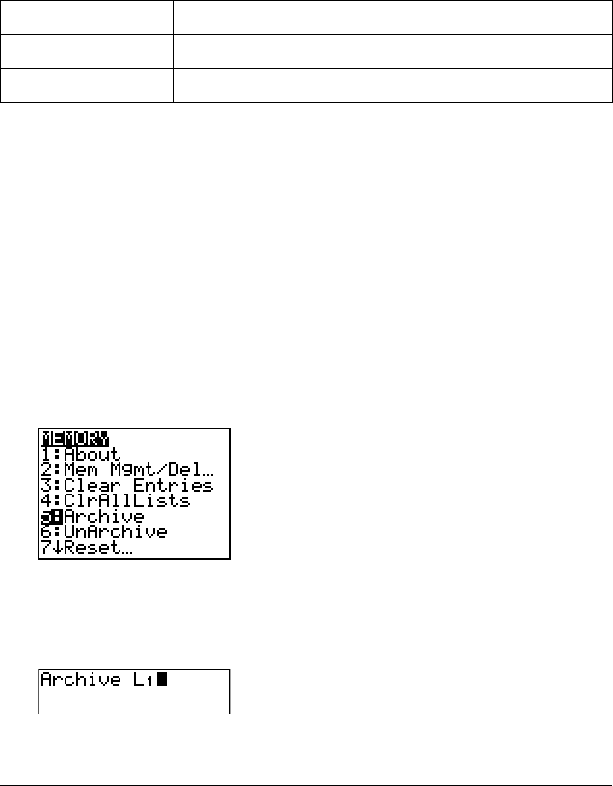
Memory and Variable Management 85
Archiving and unarchiving can be done in two ways:
• Use the
5:Archive or 6:UnArchive commands from the MEMORY
menu or
CATALOG.
• Use a Memory Management editor screen.
Before archiving or unarchiving variables, particularly those with a large
byte size (such as large programs) use the
MEMORY menu to:
• Find the size of the variable.
• See if there is enough free space.
Note: If there is not enough space, unarchive or delete variables as
necessary. Be aware that when you unarchive a variable, not all the
memory associated with that variable in user data archive will be
released since the system keeps track of where the variable has been and
where it is now in RAM.
Even if there appears to be enough free space, you may see a Garbage
Collection message when you attempt to archive a variable. Depending
on the usability of empty blocks in the user data archive, you may need
to unarchive existing variables to create more free space.
To archive or unarchive a list variable (L1) using the Archive/UnArchive
options from the
MEMORY menu:
1. Press y L to display the
MEMORY menu.
2. Select 5:Archive or 6:UnArchive to place the command in the edit
screen.
3. Press y d to place the L1 variable in the edit screen.
4. Press Í to complete the archive process.
For: Sizes must be such that:
Archive Archive free size > variable size
UnArchive RAM free size > variable size


















